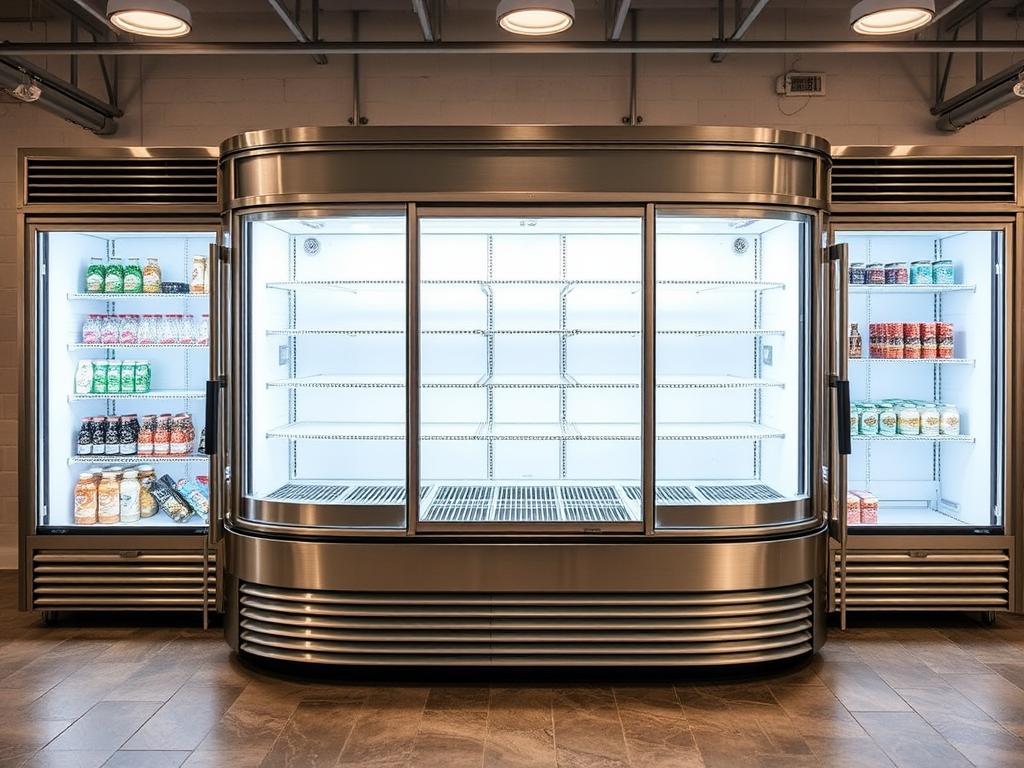When it comes to running a successful restaurant, hotel, or café, one of the biggest challenges is managing refrigeration efficiently. Walk-in coolers are the backbone of many food service establishments, ensuring that perishable goods stay fresh and ready for service. But did you know that choosing the right sales walk-in cooler can transform your business? Whether you’re upgrading an existing setup or starting fresh, understanding the ins and outs of walk-in coolers will help you make smarter investments, improve operations, and increase profitability.
In this comprehensive guide, we’ll explore what makes a sales walk-in cooler a game-changer, how to select the right model, and tips for maximizing its efficiency. Let’s dive in!
What Is a Sales Walk-In Cooler and Why Is It Important?
A sales walk-in cooler isn’t just a larger version of your household fridge — it’s a specialized refrigeration unit designed to store large quantities of perishable products like vegetables, meats, dairy, and beverages. These coolers are typically used in restaurants, hotels, and cafes that need quick access to ingredients during busy hours.
Think about a busy restaurant kitchen: chefs need fresh ingredients nearby but don’t want to clutter their limited space. Walk-in coolers solve this problem by offering ample storage that’s easily accessible. They also help regulate temperatures effectively, preventing spoilage and reducing food waste, which directly impacts your bottom line.
Moreover, in the competitive food industry, maintaining the freshness of ingredients can make or break your reputation. A high-quality sales walk-in cooler ensures your inventory stays in prime condition, saving costs on replacements and making your operation smoother.
Key Features to Look for in a Sales Walk-In Cooler
Not all walk-in coolers are created equal. When selecting a unit for your business, it’s important to understand the features that matter most. Here are some crucial factors to consider:
| Feature | Why It Matters |
|---|---|
| Size and Capacity | Make sure it fits your current inventory needs, with room to grow. Overly small units cause frequent refills, while too large units waste energy. |
| Insulation Quality | Proper insulation keeps your cooling costs down and maintains a stable temperature, even during busy hours or power fluctuations. |
| Door Type | Choosing between swing or sliding doors depends on your space and access needs. Sliding doors save space, but swing doors are easier to operate. |
| Cooling System | Opt for energy-efficient, reliable refrigeration units that can handle large loads without excessive electricity consumption. |
| Temperature Control | Precise controls and digital displays make it easier to monitor and adjust temperatures for optimal storage conditions. |
| Material Durability | Stainless steel interiors and exteriors resist corrosion and are easier to clean, keeping your cooler hygienic and looking professional. |
Design Tips for Maximizing the Efficiency of Your Walk-In Cooler
Investing in a sales walk-in cooler isn’t just about buying the right unit — it’s also about how you use and maintain it. Here are some practical tips to get the most out of your cooler:
Proper Organization
Maintaining a logical layout inside the cooler helps reduce cold air loss when opening doors. Keep frequently used ingredients near the front and organize items by category or expiration date. Use shelves and bins to prevent overcrowding, which can hinder airflow.
Regular Maintenance
Routine checks of door gaskets, coils, and cleaning the interior prevent issues before they become costly problems. Keeping the coils clean ensures the compressor works efficiently, cutting down energy costs.
Optimize Door Usage
Limit how often and how long doors stay open. Consider installing secondary doors or air curtains to reduce temperature fluctuations caused by frequent access.
Temperature Monitoring
Use digital sensors and alarms to monitor temperature levels in real-time. Immediate notifications about temperature deviations allow quick adjustments, preventing spoilage.
Choosing the Right Sales Walk-In Cooler for Your Business
Every food service operation has its unique needs. Small cafés might need a compact unit, while large hotels require extensive storage. Here’s a quick guide to selecting the best fit:
- For small businesses: Compact models with flexible door options and efficient insulation are ideal.
- For growing establishments: Look for modular coolers that can be expanded or customized as your inventory increases.
- For high-volume operations: Invest in large capacity models with robust cooling systems and easy access features.
Also, consider climate conditions in your location — hotter climates demand units with higher cooling capacities and better insulation.
The Future of Sales Walk-In Coolers: Innovation and Trends
Technology is rapidly advancing in the refrigeration industry. Smart walk-in coolers equipped with IoT sensors allow remote monitoring, data analytics, and predictive maintenance. These innovations drastically reduce downtime and maintenance costs, ensuring your operation runs smoothly.
Sustainability is also becoming a bigger priority. Energy-efficient models with environmentally friendly refrigerants help reduce your carbon footprint and operating costs.
Conclusion
A sales walk-in cooler is a vital investment for any food business aiming to maximize freshness, efficiency, and profitability. By understanding the features to look for, adopting smart organization and maintenance practices, and choosing the right model for your specific needs, you can transform your storage approach. Not only will your operational costs decrease, but your customers will also notice the difference in product quality. Remember, a well-chosen and well-maintained walk-in cooler isn’t just a storage solution — it’s a strategic asset that can elevate your entire business.
#FoodServiceEfficiency #WalkInCoolerTips #RestaurantStorage #FoodPreservation #RefrigerationSolutions #SmartCooling #KitchenUpgrade #CafeEquipment #HotelFoodManagement #RestaurantInnovation
